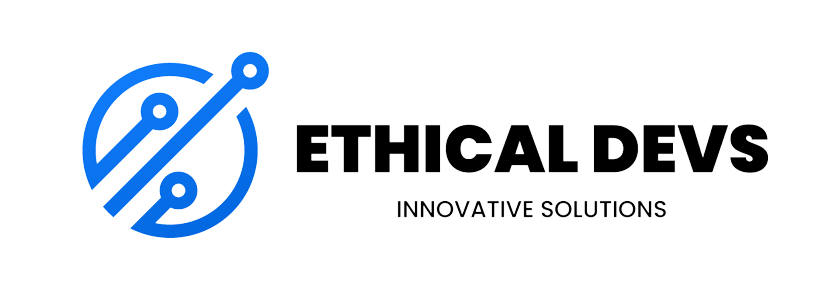Practical communication is the backbone of any successful project, and in the fast-paced world of software development, effective communication, which according to azcentral improves work productivity in about 25 of percent employees, is even more critical to the success of a project. However, despite advancements in technology and tools and the best efforts of project managers and team members, miscommunication can still occur.
Communication gaps in software development have varying negative effects on the execution process and outcome of a project; however, in this blog post, we will discuss the causes of communication gaps in software development project teams and explore strategies for mitigating them.
By helping you, as a client, understand the root causes of these challenges, you can test and incorporate techniques for your team and work towards delivering successful projects.
Table of Contents
ToggleWhat are the Common Communication Gaps in Project Teams?
The issues range from team members interpreting information differently, mismatched expectations, misunderstandings, or the need for clarity in requirements.
Below are some forms of communication gaps in software development project teams:
- Lack of Clarity in Requirements: When project requirements are not plainly defined, there could be misinterpretations that can adversely impact the success of a project. When there is an exchange of complex information, team leaders must ensure that everyone has a clear and shared understanding of the information to avoid drawbacks.
- Decentralized Communication: Decentralized communication is the distribution of communication across various individuals or groups in an organization rather than by a single(centralized) source.
Communicating separately to many different people on the same project or task might create misinformation, delays in decision-making, and a lack of accountability, as it can be challenging to determine who is responsible for specific tasks or decisions. - Inadequate Information: Team members may make incorrect assumptions or work in different directions leading to errors in their work, lack of coordination, and duplicated efforts if they are not provided with sufficient information on the work to be done.
Also, a lack of adequate information can result in misalignment of goals, missed deadlines and decreased productivity, as team members need to be on the same page regarding the project’s scope and timelines, causing frustration and tension within the team. - Too Much Information: Overwhelming amounts of data can lead to confusion and misinterpretation, making it difficult for team members to focus on the most critical aspects of the project. Sifting through a lot of information and data can prevent team members from missing important details and leading to mistakes in their work.
- Uncommunicated Changes: At any point during a software development project, the goals and expectations might change due to new information or market response.
When changes to a codebase, design, requirements or any other aspect of a software project are not communicated to the rest of the team, team members may continue to work under outdated assumptions.
Effects of Communication Gaps
- Delays: When there are communication gaps in software development within a team, there will be a misalignment between what is expected and what is delivered. As a result, team members keep working on the same parts of the project until expectations are appropriately communicated.
Furthermore, communication gaps can cause stakeholders to be misinformed about the project’s status, leading to incorrect decision-making and further delays. - Rework: With clear communication of what is expected from every team member, parts of the project follow the laid-out path and won’t have to be redone. This prevents increased time and effort spent on rework, and overall, reduced productivity and extra project costs.
Additionally, rework can result in decreased morale and motivation among team members, causing further delays and impacting the project’s overall success. Redoing the project often can also cause inconsistencies in the final product, leading to additional bugs and defects that need to be fixed. - Waste of Resources: Resources that the team should use to modify and improve the product will be diverted into fixing mistakes and redoing parts of the project that do not align with the overall goal. It can result in missed opportunities and lost revenue, as well as increased costs for the project.
- Dissatisfaction Among Stakeholders: Project managers, clients, developers, and even the end-users will be frustrated by the direction of a project with persistently poor communication. Delays and rework caused by communication gaps can result in missed deadlines and deliverables, leading to dissatisfaction and losing the trust of stakeholders.
- Bad Team Outcomes: Furthermore, communication gaps in software development can result in an inconsistent or subpar final product that does not meet the needs and expectations of users. The effects of communication gaps on a software team are so far-reaching that they can lead to you having an unmarketable product on your hands.
They can also negatively affect team dynamics, causing reduced collaboration, decreased morale, and increased conflict.
How To Mitigate Communication Gaps in Software Development Teams
Mitigating communication gaps in software development project teams requires a combination of proactive measures and effective communication strategies (i.e. adopting an agile approach to project management). Some of the ways to mitigate communication gaps include:
- Open and Effective Communication: Encouraging team members to have open and transparent discussions about project requirements, challenges, and expectations will help clear up misunderstandings and ensure everyone is on the same page.
- Regular and Timely Updates: Regular progress updates ensure everyone is aware of the project’s status and any changes to requirements or expectations. It will help teams avoid awkward situations and overlaps in task execution.
- Collaborative Problem Solving: Team members should work together to resolve any challenges or misunderstandings that arise during the project. This way, everyone is contributing to the project’s progress and is up-to-date with any information that may come up.
- Employ Project Managers and Project Management Tools: Project managers, with their tools, help centralize information ensuring clear and consistent communication among team members and stakeholders. These tools can also facilitate regular check-ins and progress updates, helping to keep all team members and stakeholders informed and aligned.
Additionally, managers can help teams to identify and resolve issues more quickly, reducing the risk of delays and rework. In hiring a PM, ensure they have a level of technical understanding. Public opinions on social websites have shown that software developers better appreciate technical PMs on their teams.
Read More: Importance of Project Management
Conclusion
Bridging communication gaps in software development projects can build trust, increase collaboration, and improve outcomes for the project and all stakeholders involved. Thus, effective communication can help software development teams maximize their outputs and achieve their goals sooner and effortlessly.









